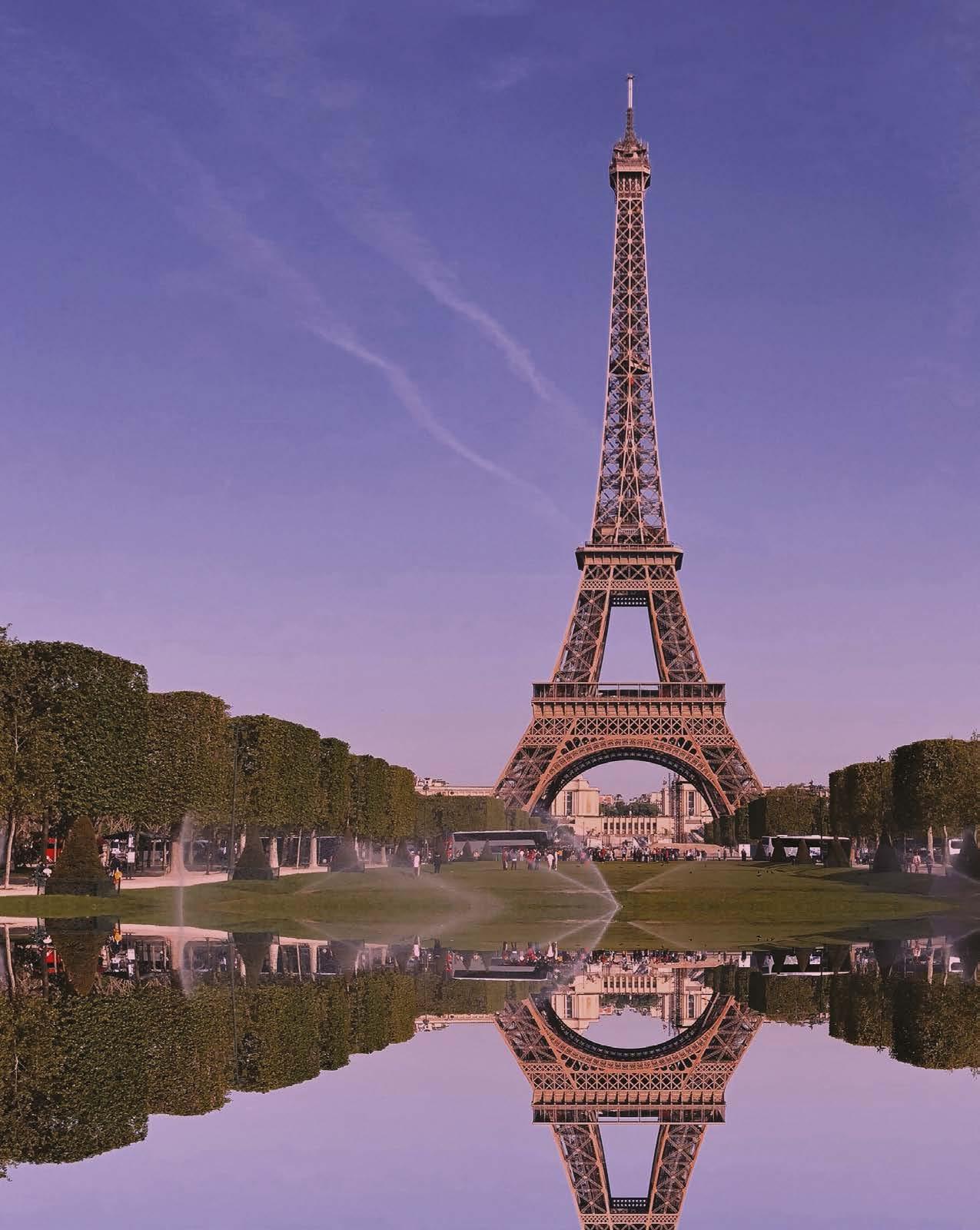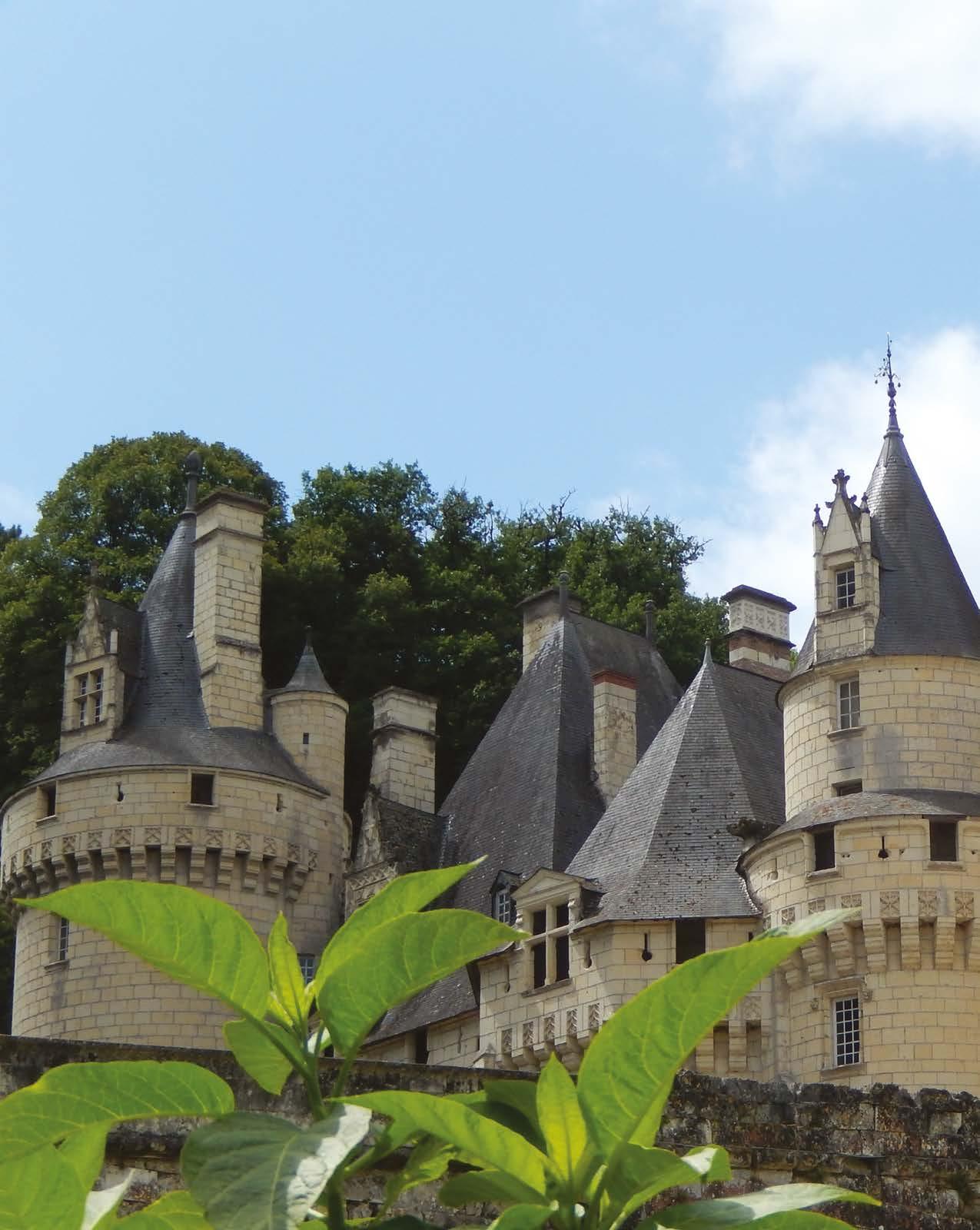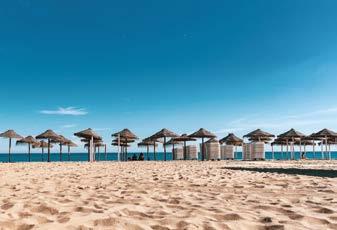14 minute read
Visit France: our favourite spring destinations
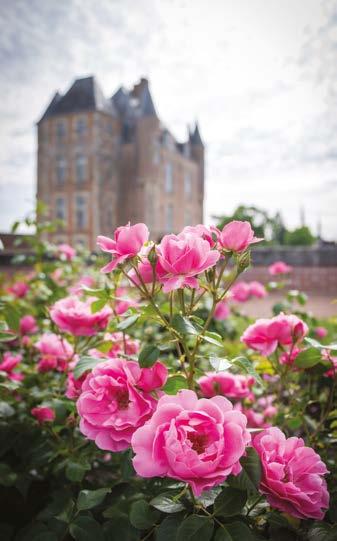
Stop and smell the roses in the Loire Valley
With its subtle perfume, soft pigment and velvety petals, the rose has been a source of poetic inspiration for generations of artists. The Loire Valley in central France is both a botanical paradise and the best place to see these flowers in bloom. Embark on the romantic Route de la Rose – for a leisurely ride through the region’s 15 most fragrant spots.
TEXT: KATE HARVEY | PHOTOS: TOURISM LOIRET
The rose is a symbol of timeless beauty, and was in fact the first flower to be grown for ornamental purposes. By collaborating with various producers, gardeners and restaurant owners throughout the region, the Loire Valley has established its very own dedicated rose route to honour the reigning flower of the region.
The Route de la Rose is a special circuit around 15 parks, gardens and producers throughout the Loire, which allows visitors to admire the flowers up close and personal. Discover its rose-tinted heritage at your own pace along the trail – the little pleasures will make it worth your while.
Begin in the forest… or the city The Route can be accessed by both nature lovers and urban dwellers alike. Even the nearby city of Orléans is home to a plethora of rosy delights: such as the Parc Floral de la Source, and the Roseraie Jean Dupont. There are over a thousand and one roads
Issue 13 | March 2020 lined with rose bushes, so you can plan your own route accordingly. Thanks to its fertile soil and an exceptionally mild climate, the Loire is the ideal place for this classic flower to thrive.
Alternatively, visitors can begin in the forest where wild rosehip was first picked in the Middle Ages; it was from this moment on that the Loire became a centre point of horticulture and botany. Immerse yourself in the natural world and head to Chilleurs-aux-Bois, where you’ll witness the thorny climbing roses and dog-rose bushes in their native setting.
A warm welcome from a community of rose lovers Parks, gardens, restaurants, chateaux and hotels will welcome you throughout your journey, to tell you about the rose and its many virtues. Visitors will leave with a new favourite rose variety and ideas for their garden back home – and, of course, visual and fragrant memories to last a lifetime. Some of the chateaux possess over 450 ancient rose varieties. “Bellegarde is a town intimately linked with the history of the rose,” says Anne Marie Leforestier at Tourisme Loiret. “When the rose is in full bloom, Orléans and the Roquelin garden in Meung-sur-Loire are a must.”
Plan your visit The Loiret roses perfectly mark the passage of time, as the seasons change from May through to September. Visitors therefore have plenty of time to catch the flowers at their finest. Visit the Tourisme Loiret website for a detailed map and plenty of recommendations on where to eat, sleep and explore.
www.routedelarose.fr www.tourismeloiret.com
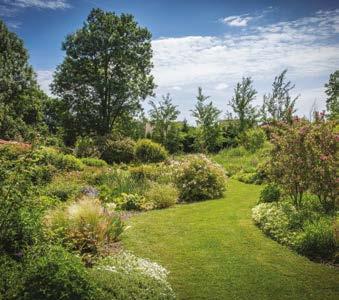
Photo: AS Flament
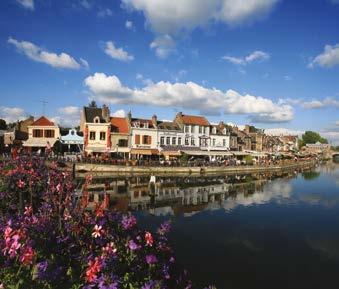
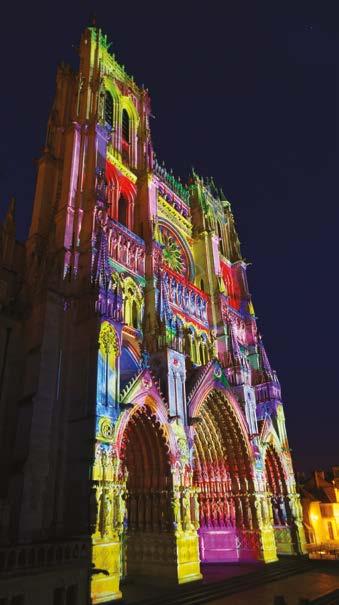
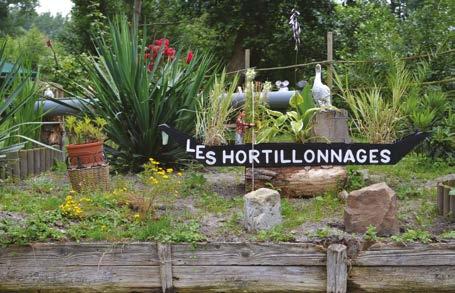
Photo: Celine François
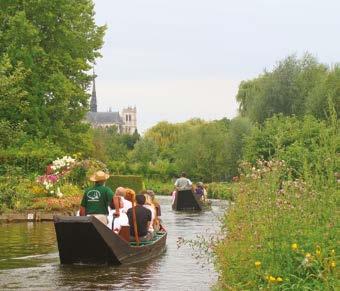
Spectacle Spectre Lab pour Amiens Metropole. Photo: L. Rousselin
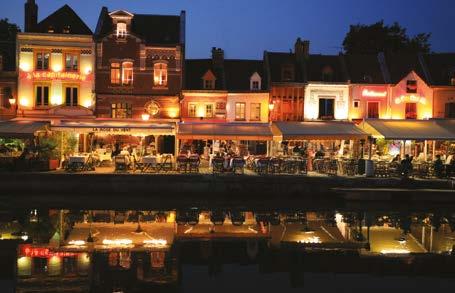
Photo: AS Flament
Heritage and horticulture hiding in plain sight
Amiens could be the most impressive city you’ve never heard of. As the hometown of French president Emmanuel Macron, the Somme hub has become better-known of late, but it is the city’s surprising heritage, quirkiness and beauty that has sparked a spike in tourist curiosity more recently.
TEXT: HANNAH JANE THOMPSON | PHOTOS: OFFICE DE TOURISME AMIENS
Its history is unmistakable; this year marks eight centuries since the first stone of the majestic, gothic cathedral was laid, with many celebratory events planned, including a choir of 800 children for each of the 800 years, plus concerts, exhibitions, and a stunning light show. Also key for 2020 is the newly-revamped Musée de Picardie, a must-visit 19th-century treasure trove that was the first ever purpose-built museum in France.
Heritage is also found here in the city’s 300 hectares of picturesque ‘floating gardens’. Dubbed ‘hortillonnages’, these canals and islands led to Amiens being named ‘the Venice of the North’, and they now play host to 50 garden and art exhibits for the city’s annual International Garden Festival event, including work from many international artists. Visitors can hire boats to explore this watery world, which was once home to the city’s ‘hortillons’ (market gardeners, who still sell their fresh produce every Saturday), and the most intrepid can even stay overnight in supercolourful, tiny island cabins. A short bike ride away, the historic, waterside Saint-Leu neighbourhood below the cathedral offers an easy option for drinks or dinner. “Families and young couples love the hortillonnages,” explains Stéphanie Cadet, from the Amiens tourist office. “It’s a real adventure.” The city’s heritage also extends to literature: famous French writer Jules Verne married an Amiens woman, and wrote 30 books in their local home, including most of his Extraordinary Voyages collection. The house is now open to the public as an atmospheric and immersive homage.
But Amiens does not only look to the past; as the 2020 European Capital of Youth, new plans are always on the horizon, including a multi-part revamp of the city’s zoo. The city is also proud to be a welcoming, eco-friendly city that is easy to get to by train, does not require a car, and is green in all senses of the word. “People are always so surprised by the feeling of peace and wellbeing here,” says Cadet. “The station is right in the centre of town, and everything is accessible on foot or bike. That is yet another sign of our truly relaxed spirit.”
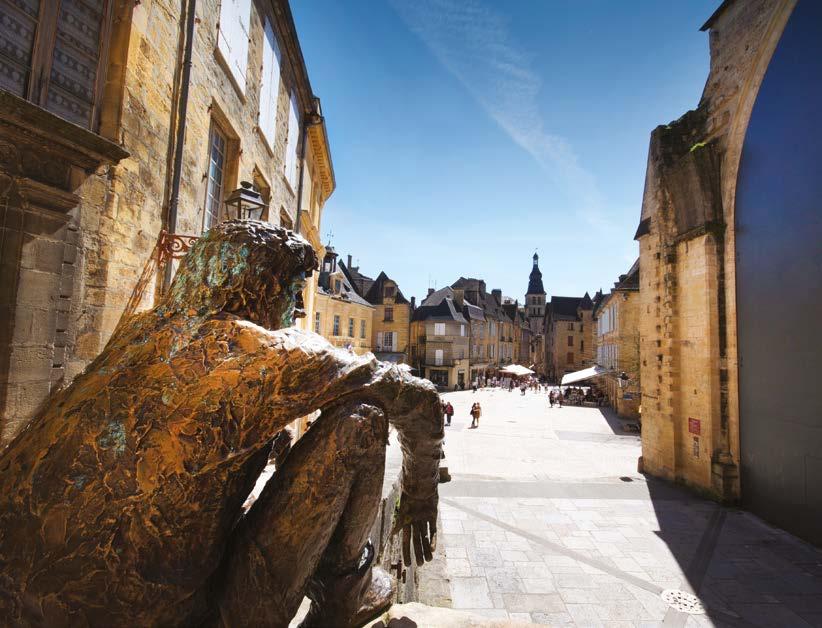
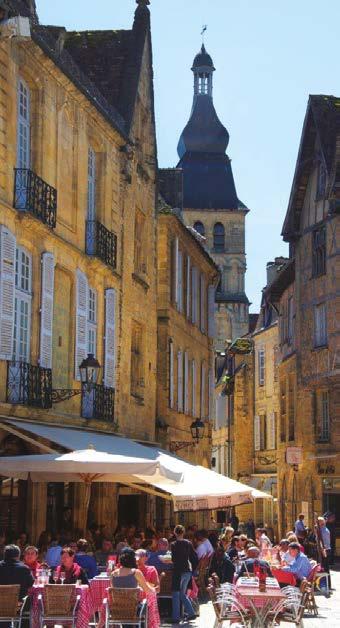
Sarlat, where natural beauty, gastronomy and history combine
Sarlat Tourisme has something to offer for all types of visitors to the region, from outdoor adventure getaways to cosy gastronomical discoveries, and inspiring walks through medieval castles and local markets.
TEXT: STEPHANIE UWALAKA | PHOTOS: DAN COURTICE
Between the Dordogne valley and the Vézère valley, the region of Périgord Noir boasts a rich history and agricultural heritage that make the small town of Sarlat an unmissable tourist destination in southwest France. The tourist office offers a whole range of experiences, highly recommending the Sarlat town market, guided castle tours, truffle-finding excursions, and night walks. Apart from the nature walks available, Sarlat also has a panoramic lift in the bell tower of the old Saint-Marie church, constructed by the well-known architect Jean Nouvel, giving a beautiful view of the town; and of course, a chance to visit the inside of the church, now an indoor market. The Périgord noir region
Issue 13 | March 2020 also holds several seasonal events during the year, with its upcoming Local Produce Weekend in May, where you can sample all the best chestnuts, strawberries, wines and even caviar, that the region has to offer. Other notable regional events throughout the year are the Christmas Market, the Truffle Festival in January, and various cultural festivals involving theatre, film and jazz and swing music.
Also located in the region is the medieval town of Rocamadour, a UNESCO World Heritage Site that attracts tourists from around the world and is known as the third-most-visited tourist site in France; it is also not far from the stunning Padirac natural caves. Not just exceptional for its natural beauty and medieval heritage, the region offers a host of locally sourced produce, giving any visitor an indulgent taste of local French gastronomy, including foie gras, black truffles, ceps and goat’s cheese: all farmed in the region itself.
It is possible to rent a holiday home for visitors in groups and book all the activities together, such as walks in Dordogne and guided tours, so that you can enjoy your stay without hassle. Surrounded by beautiful villages and with its enviable markets, Sarlat has a special mix of outdoor sport activities, heritage site visits and proudly produced local food, that make it an essential travel destination this year, and hopefully, for years to come.

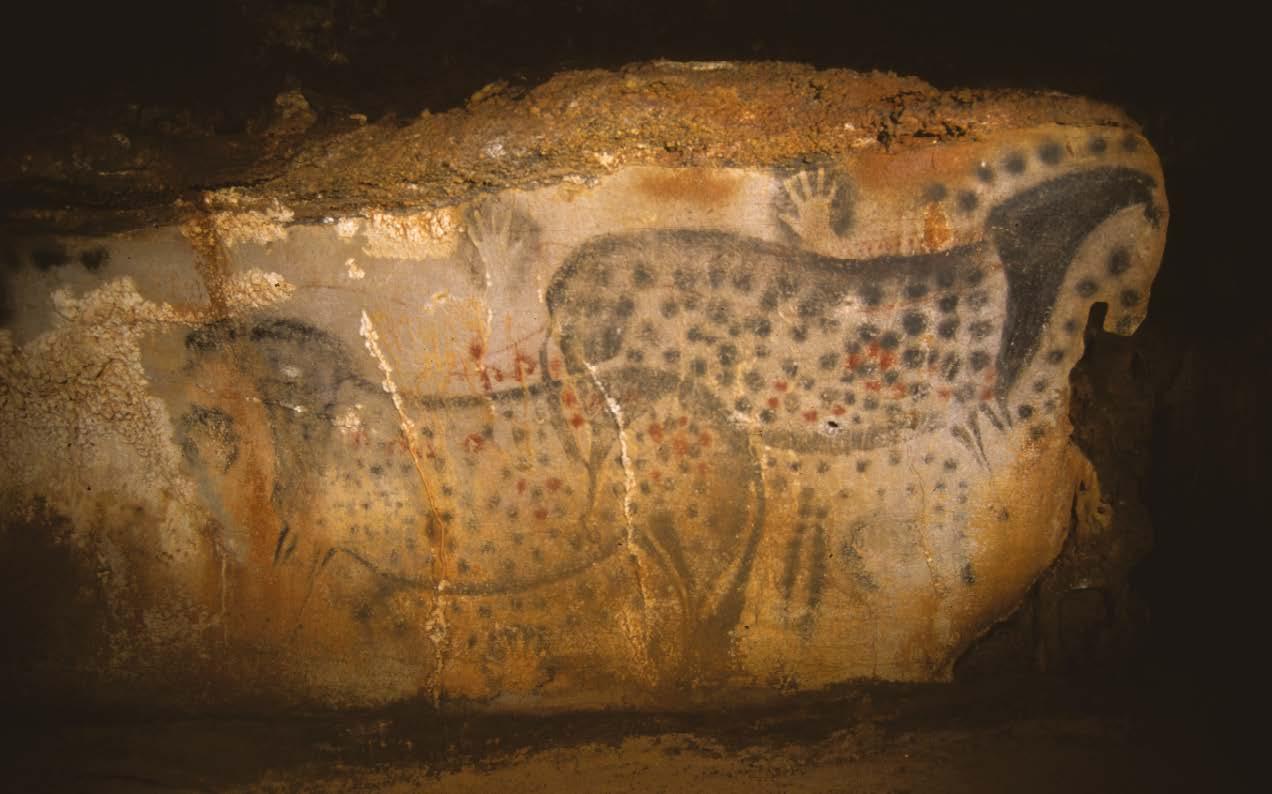
Paintings through time
To visit the cave at Pech Merle is almost akin to a visit to another world while travelling through time. Located in the picturesque Lot Valley in France (just over half an hour’s drive from Cahors, or two hours’ from Toulouse), the Centre de Préhistoire du Pech Merle is one of only a few in the old province of Quercy to offer visitors the chance to get up close and personal with prehistoric paintings from tens of thousands of years ago.
TEXT: HANNAH JANE THOMPSON | PHOTOS: P. CABROL - CENTRE DE PRÉHISTOIRE DU PECH MERLE
Although less than 100 kilometres from the super-famous Lascaux caves, this site offers an even more authentic experience: because these Paleolithic paintings are not copies, they are the real thing. This is what is so unique about Pech Merle, and adds an extra, thrilling dimension to a visit here. Guided tours last around 45 minutes, with translations available in 12 languages. “Visitors say that it is very moving,” explains Bertrand Defois, director of cultural and tourist development at the centre. “Here, you can stand a few dozen centimetres away from artwork that was first created 29,000 years ago.”
Amedée Lemozi The visit is set up to emphasise this rare experience, with visitors encouraged to immerse themselves in the otherworldly feeling of the cave. “You feel like you are in another universe,” says Defois. “There are strange noises and shapes – stalactites, stalagmites – and it’s dark. You lose all of your reference points. It's like being in a time machine.”
Issue 13 | March 2020 Discovered in 1922, the site would become the project of local priest and prehistorian, Amedée Lemozi. Having come to the nearby village of Cabrerets after the First World War to teach, he encouraged his students not only in religious education, but also in his love of prehistoric treasures. Energised by his lessons, three teenagers aged 13 to 16 were exploring nearby when they came across the artwork, and their teacher became the first person to study the paintings.
Inspired, Lemozi decided to open the cave to the public in 1926, realising that the paintings were in such good condition that they could be viewed in their original, authentic form. There are 800 drawings in total (of which not all are accessible to the public), with the most famous work being The Punctuated Horses: a horse head next to symbolic dots, which has become the centre’s logo. Equally as astonishing is an
actual footprint in the dirt – a real-life remnant of the European early modern humans who walked in that exact spot. The Pech Merle cave, as it came to be known – taking on the Occitan name of the hill above it – would later become today’s visitor centre.
80,000 visitors Now, the Amedée Lemozi Museum allows guests to understand the history in even more detail, including the screening of a 25-minute documentary film created by a researcher; and the site explores the prehistory of the entire area, placing Pech Merle in context of the region’s wider, prehistoric gems. While the centre itself admits that it “cannot compete” with Lascaux – on visitor numbers or on the level of international fame – it does now attract more than 80,000 visitors per year, and is always fully booked in the summer months of July and August. Guests planning a trip are strongly advised to book their visit in advance, Defois says, to ensure they will be included as one of the limited number of daily guests. Entrances are capped at 700 people per day, to protect the paintings. There are also plans to modernise the centre soon, and add even more English-language guides to the existing daily tours.
Indeed, the area is popular with tourists, and visitors often pair their trip to Pech Merle with a visit to the nearby medieval village of Saint-Cirq Lapopie. Perched perilously-yet-beautifully on a mountainside

overlooking the picturesque Lot Valley, it is a favourite among painters and writers, and has been named as one of the official Plus Beaux Villages de France. As one might expect, a veritable industry has also popped up closer to Pech Merle itself, with many recommended hotels and restaurants bearing its name.
Revolutionary drawings This is a region offering near-unparalleled access to the history of France through the ages, from the cave paintings, to the medieval churches, villages and cathedrals of the Middle Ages – not to mention the stunning natural scenery. And in today’s world
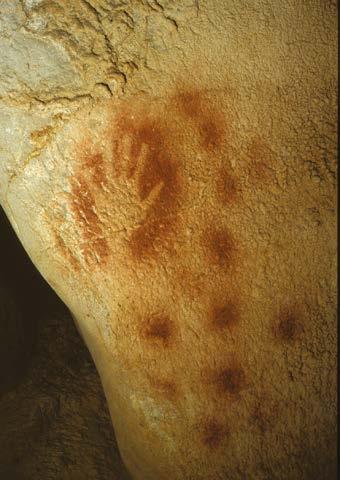
– so full of images, design, photos and distractions – it is worth remembering how incredible this early art must have seemed to the people who created it, and consider how powerfully somewhere like Pech Merle can remind us of our own place in humans’ journey through millennia. “Today, in our society, there are images everywhere,” explains Defois. “But these are some of the first drawings that were ever made by our species of humanity. They must have been completely revolutionary.”
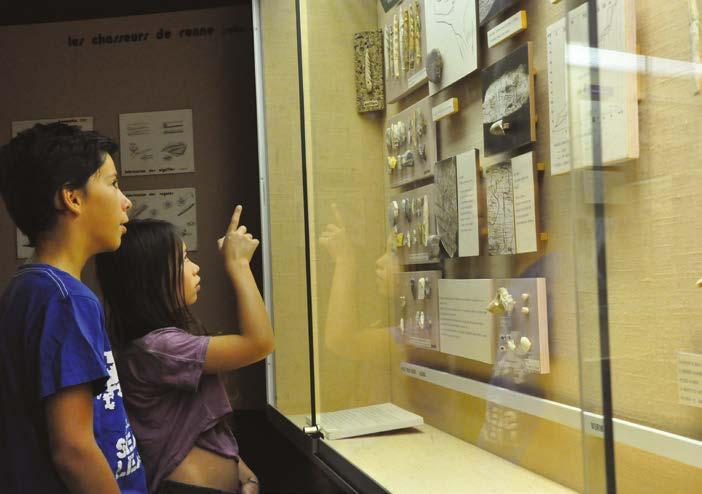
en.pechmerle.com Facebook: Pech-Merle

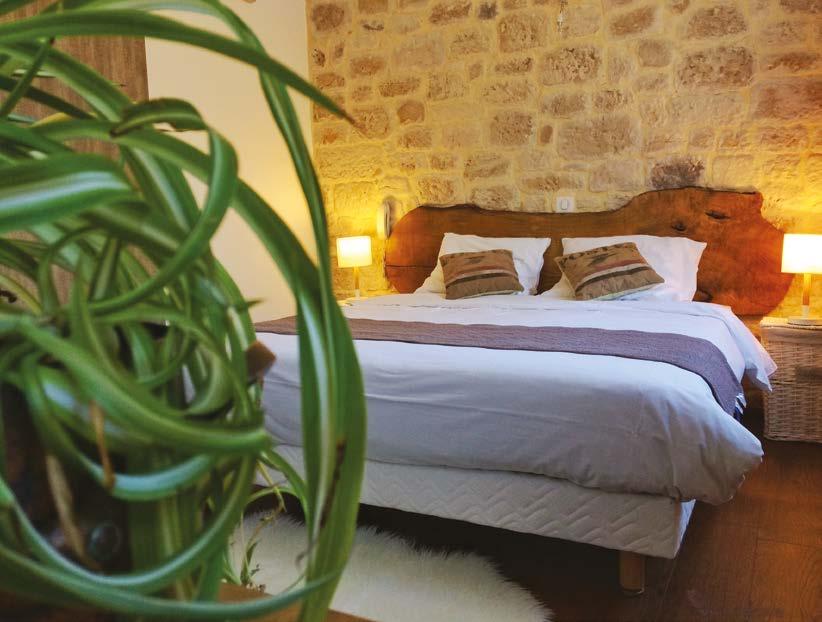

Just a stone’s throw from neolithic France
For centuries, hikers and pilgrims have sought solace among the geological wonders of the Causses du Quercy national park. And for almost a century, the Hôtel Restaurant des Grottes has welcomed them to stay at the heart of it all. Located at the foot of one of southern France’s most historic caves, it offers a tranquil place to stay and hearty local food.
TEXT: KATE HARVEY | PHOTOS: HÔTEL RESTAURANT DES GROTTES
For exploring the Causses du Quercy national park, you couldn’t be better located than at the Hôtel des Grottes. The hotel and restaurant are named after the Pech Merle grotto; formed over thousands of years by an underground river carving the limestone rock and creating unique subterranean channels. “In the 1920s, Roger Théron decided to take over the family business, together with his young wife Marthe David, who was one of the first to discover the Pech Merle Cave,” explains Clelia Leroux. “A few years later, they built the first four rooms and ‘Maison Théron’ became the Hôtel des Grottes.”
Organic cuisine in a scenic spot Since the fifties, the Théron family have provided warm dishes, and even warmer hospitality. The restaurant’s terrace overlooks some of the region’s most peaceful spots, such as the limestone Cabrerets cliffs and the nearby River Célé. Guests can make the most of the sun with breakfast on the terrace: “Every morning, we serve organic local produce in a simple and authentic setting,” says Clelia. The restaurant offers a range of regional dishes; not to mention the long list of local beers and wine from the Quercy region itself. “Our restaurant accommodates up to 150 people, so we can also help with event planning.”
If stones could speak The Pech Merle cave is famous for its neolithic murals of mammoths, bison and horses etched into the calcareous rock. Over time, the geological formations have added texture
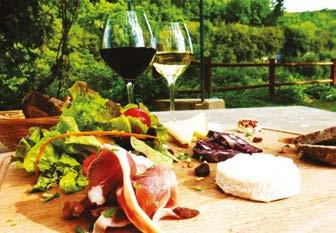
to each marking - some of which were created more than 25,000 years ago. Here, the geological heritage of the Causses du Quercy is very much a lived experience. “Even the nearby Château des Anglais is built into the bedrock,” explains Clelia.
Explore the region of Occitanie Whether you’re hoping to retreat into the natural caves, or spend an afternoon overlooking the cliffs from the pool; a stay at the Hôtel des Grottes is the perfect base for exploring the Occitan part of southern France. There are a number of stunning excursions for exploring off the beaten track on foot, bike, horse or canoe: embark on a seven-day hike of 200 kilometres through the Dordogne and the vineyards of Cahors; or a 175-kilometre hike along the river Célé, which is ideal for a long weekend.
The hotel and restaurant will open again on 8 April until 30 September 2020.



